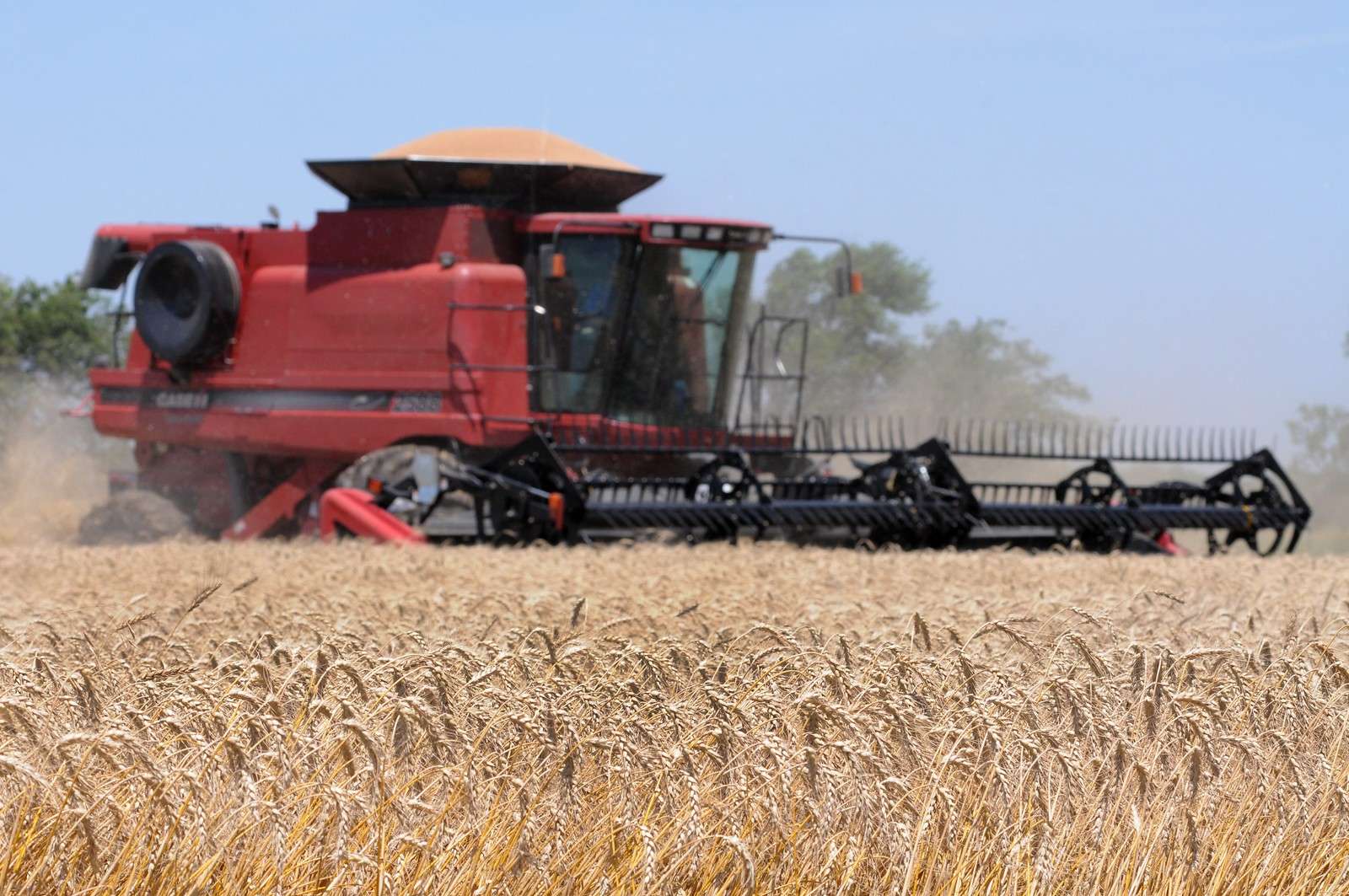
MARC JACOBS
Hutch Post
As combines roll across Kansas fields, the state’s wheat harvest has become a story of both hope and hardship this season. Justin Gilpin, CEO of the Kansas Wheat Commission, says the 2024 harvest is shaping up better than the drought-stricken years before it — but not without its share of fresh challenges.
“This year’s harvest has really been a roller coaster for our farmers,” Gilpin said in a recent interview. “We had an early start around June 10, but persistent rains have dragged things out and created real headaches, especially in parts of south-central Kansas.”

While some regions, particularly western Kansas, are seeing above-average yields and a welcome rebound after years of drought, others have been soaked by untimely storms just as the wheat ripened. In counties like Sumner, some farmers may not even harvest certain fields that sat underwater for days.
“You hate to complain about rain after years of drought, but ripe wheat doesn’t like wet feet,” Gilpin said. “Some wheat has lodged and laid over because of the wind and storms, and there are farmers talking to insurance adjusters because they just won’t be able to get it all out.”

Kansas wheat farmers are also contending with low wheat prices and lingering high input costs, adding to the stress. “It’s that squeeze — costs going up, income going down — that farmers keep facing year after year,” Gilpin said.
Still, there is cautious optimism that markets may improve slightly, and Kansas wheat is gaining fresh attention abroad. About half the state’s wheat crop is sold overseas, and after smaller harvests in recent years, Kansas farmers are working hard to regain export market share.
Just last week, international wheat buyers from Brazil, Colombia, Chile and Ecuador toured Kansas wheat farms and grain elevators — even riding combines to see the harvest up close.
“Having those millers in the field, meeting the families behind the grain, seeing the entire process from farm to export terminal — that relationship-building is invaluable,” Gilpin said. “When they make purchase decisions later, they remember that Kansas wheat story.”

In addition to private sales, Kansas wheat has long played a role in U.S. food aid programs, like Food for Peace, which date back to the 1950s. Gilpin said Kansas wheat farmers remain proud of that legacy and are closely watching national policy discussions about the program’s future.
“There’s real pride in knowing that Kansas wheat is helping feed people in food-insecure countries,” he said. “Keeping that legacy alive is important, not just for the goodwill it builds but for the stability it can bring to our markets.”
For now, as Kansas farmers navigate fields that are too wet in places and too dry in others, they’re hoping for clearer skies, steadier prices and fresh opportunities to get their crop to dinner tables both at home and around the world.





